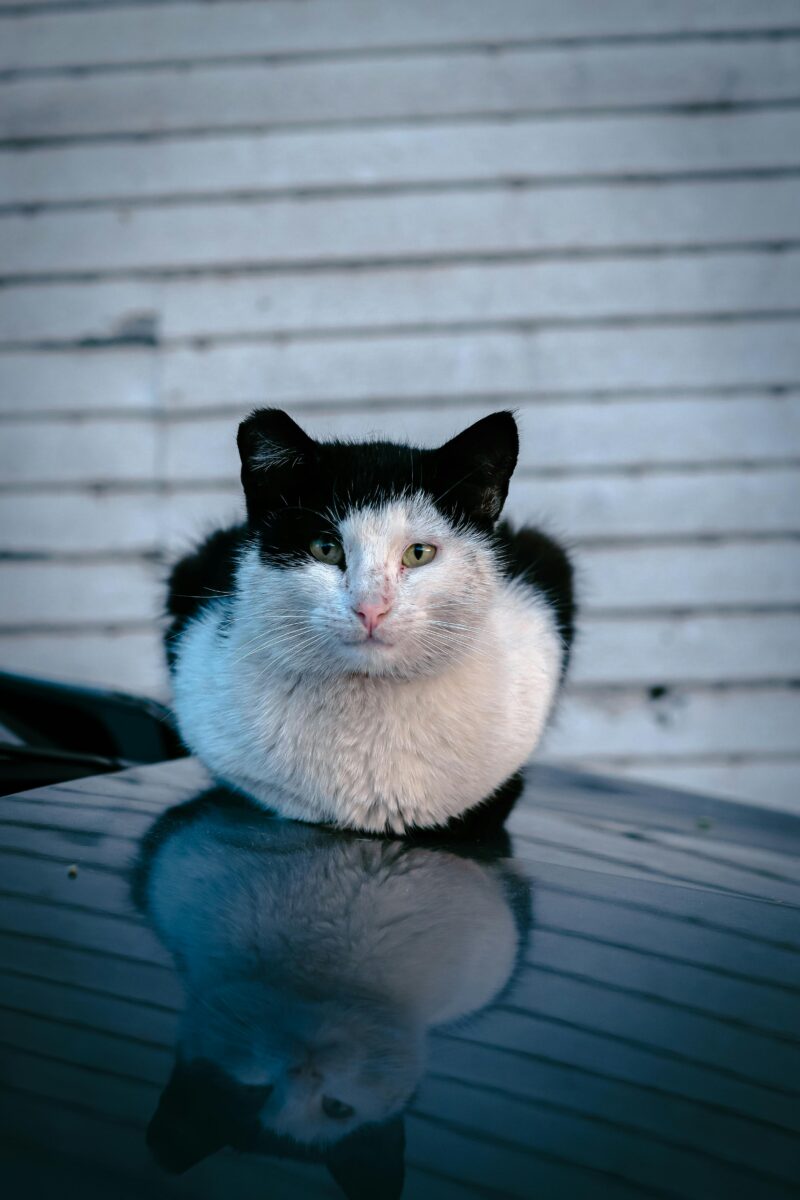While cars pose risks to animals year-round, extra precautions should be taken during the cold, dark winter months. From the dangers of being hit on the road to the hazards of seeking shelter in the wrong places, cats and wildlife are often at risk around cars.
Fortunately, there are several ways we can help protect them, both when driving and when your car is parked.
Check for cats before starting your car
In colder weather, cats may find warmth and shelter under the hoods of parked cars. They curl up in these cozy spots to escape the chill, but it can be dangerous when the car is started. To ensure you don’t accidentally harm a hidden feline, take a few simple precautions:
- Tap the hood before you start the engine. The sound may scare the cat away if there’s one hiding there.
- Honking your horn may also alert any animals in the vicinity, including a cat under the car.
- Check under your car by looking carefully around the wheels and undercarriage, especially if it’s been parked for a while.
Taking these few extra moments can save a life—both for cats and for any other small animals that might take shelter in similar spots.
Drive slowly and carefully, especially at dawn and dusk
Animals are most active during twilight hours—at dawn and dusk—when visibility is low, and they are more likely to dart across the road. Slow down during these times, especially in areas where wildlife may be active. Keep an eye out for creatures like squirrels, foxes, racoons, or deer that might suddenly cross your path.
- Be alert even if you don’t see anything right away. Animals can emerge unexpectedly.
- Use extra caution in rural or wooded areas where wildlife is more likely to be present.
- Look out for wildlife road signs as many areas with high wildlife traffic will post signs to alert drivers to the presence of animals crossing.
- Watch for eyeshine at night. Many types of animals have eyes that reflect headlights, making them easier to spot.
- Reduce speed during poor weather conditions as this can cause decreased visibility and make it harder to brake effectively. By staying vigilant, you can greatly lower the risk of a collision with an animal.
Both cats and wildlife face a variety of risks when it comes to cars—whether it’s getting hit on the road or seeking shelter in dangerous places. We have a responsibility to minimize these risks by staying alert, driving cautiously, and taking steps to protect animals. By doing so, we can all do our part to create a safer world for our furry friends.
If this information was helpful, please help us continue to educate about pet health and well-being by making a donation. As a registered charity that does not receive annual government funding, the Ontario SPCA depends on the generosity of donors to change the lives of animals in need.


